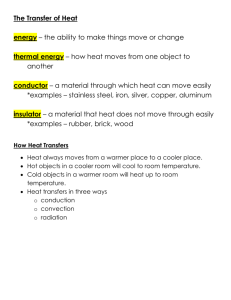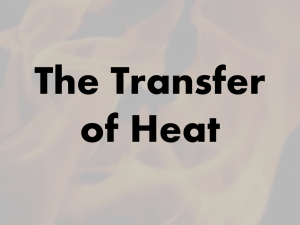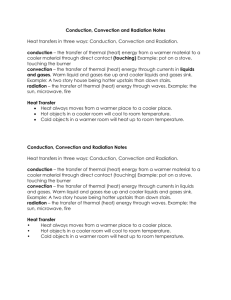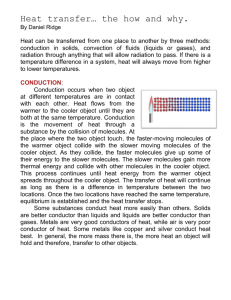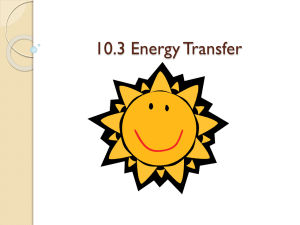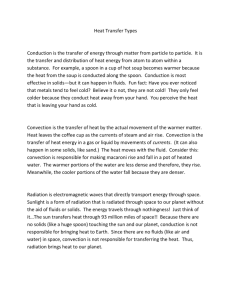Target Time - Effingham County Schools
advertisement
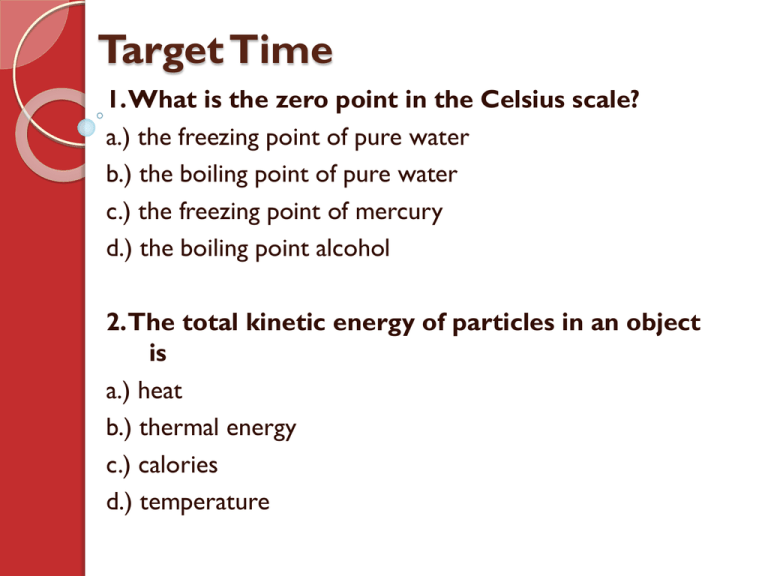
Target Time 1. What is the zero point in the Celsius scale? a.) the freezing point of pure water b.) the boiling point of pure water c.) the freezing point of mercury d.) the boiling point alcohol 2.The total kinetic energy of particles in an object is a.) heat b.) thermal energy c.) calories d.) temperature Quiz You will need: -Paper -Pencil -AR Books **Do not write on the quiz.** Schedule Changes Today: Heat -Convection -Conduction -Radiation Review Kinetic theory of matter Temperature Degrees Thermometer Thermal Energy EQ: What can cause change in temperature? Key Questions: 1. How is energy transferred through heat? 2. What are the similarities and differences among conduction, convention, and radiation? Guided Notes You will need: -One sheet of paper -Pencil Paper Title: The transfer of energy as heat can be controlled. Energy moves heat in 3 ways. 1. Conduction 2. Convection 3. Radiation What is conduction? Conduction is the process by which energy moves from a warmer object to a cooler object when the objects are touching. Conduction Example a: Energy moves from a warmer object to cooler object when the objects are touching. Conduction Example b: Energy moves from a warmer object to cooler object when the objects are touching. Conduction Example c: Energy moves from a warmer object to cooler object when the objects are touching. What is convection? Convection is a process by which energy is transferred in gases and liquids; occurs when a warmer, less dense area of gas or liquid is pushed up by cooler, more dense area of the gas or liquid. Convection Large bodies of water, such as Lake Michigan, influence the temperature of the land near by. During the spring and early summer, the lake is cool and warms more slowly than land. The air above the land gets warmer than the air over the water. The warmer air is pushed above the land is less dense than the cooler air above the water. The cooler, denser air moves onshore and pushed the warmer air up. The result is a cooling breeze from the lake. Convection Example a: Convection 2. As the air cools, it becomes more dense and starts to sink. 1. Warmer, less dense air is pushed up by cooler, denser air. Where is the cycle of air more dense? Less dense? 3. Sinking air moves under warmer air pushing it upward. The warm ground transfers energy to the air by conduction. Convection Example b: Convection Example c: What is radiation? Radiation is the transfer of energy across distances in the form of electromagnetic waves. Radiation Example a: How does radiation transfer energy? -When electromagnetic waves strike an object, they transfer energy to the object. Radiation Example b: Radiation Example c: Conduction, Convection, and Radiation Video Class work


